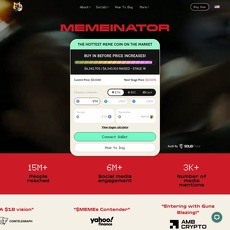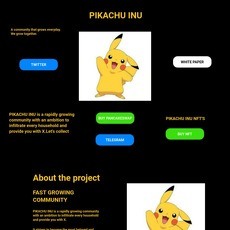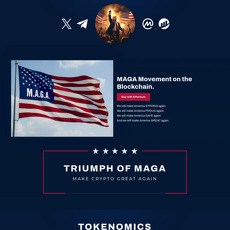OAT Network Review
OAT Network
oatchain.io
If your website is on the scam list and you think that you are not a scammer, contact us. After you provide us with all the proof that you are in Crypto World with good intentions, we will delist you. Usually, you get in this category because you are hiding your team, you have a bad reputation(you are tricking, deceiving, scamming people), and you haven't got a written project whitepaper or is a shitty one....
Their Official site text:
OAT CHAIN
Whitepaper
V1.0 Feb 2024
Abstract
This whitepaper proposes a full overview of the OAT network and gives an overview of
its capabilities as a Layer 2 solution for the Bittensor network. It will give an overview of
Bittensor and explain how OAT Network can support their ecosystem.
Introduction
Bittensor has been established as a groundbreaking solution for decentralized
computing, bringing together the idea of trustlessness between various independent
actors to solve challenges in the booming AI industry.
The Bittensor ecosystem uses an incentive-based mechanism where each incentivebased competition market is a subnet on the network. These subnets are fundamental
to the functioning network.
The subnets are run on a blockchain, to ensure decentralization and permission-less for
all actors involved. All essential elements are connected with a Bittensor API, which also
connected the subnets with the blockchain.
Bittensor uses the TAO token as an incentivization mechanism for individual actors. TAO
tokens can be earned by miners by performing useful tasks, eg by solving
computational problems which in turn secure the network.
Subnet validators independently evaluate these computational tasks by the subnet
miners. The opinion of these validators regarding the state of security of the network,
based on the mining mechanism, is then expressed as a collective input to the Yuma
Consensus mechanism on the blockchain. The output of the Yuma Consensus will then
determine the allocation of rewards of the validators and miners. Allocation of TAO
tokens are used as an incentivization mechanism for these individual actors.
Participation in the Bittensor ecosystem occurs primarily on subnets, as either subnet
owner, validator or miner.
Bittensor Challenges
With the AI industry projected to create trillions of dollars in the next years in value,
demand for AI, data and computing will soar rapidly.
Bittensor thus faces the issue of scalability, having to prepare their network for an influx
of thousands of data engineers and scientists.
For this environment Bittensor requires low latency and low transaction costs. Given the
sensitivity of data, which may include medical or insurance data, enhanced privacy
options are paramount.
As well, an easy onboarding of new users is essential. These users may not want to deal
with the hassle of complicated tokenomics and low speed and prefer a system which
offers a great user experience from day one.
Solutions brought by OAT Network
To alleviate these challenges and issues Bittensor faces, we propose an EVMcompatible based Layer 2 on Bittensor. This allows users high transaction speed and
onboarding,
OAT Network uses a simple design philosophy where interfaces for every actor are
created, which provide data off- and on-chain. No sensitive information is shared.
Nodes can collaborate to train machine learning models and transfer learned
knowledge or pre-trained models to improve performance on related tasks.
Bittensor is the heart of the system, with OAT interacting with Cross-Chain messages on
the Layer 2, with Bittensor being the verifier of OAT, while OAT remains the layer on
which applications are being built and run on.
Key Features of OAT Network
OAT Network will be the ideal place for engineers to provide storage for their data
training in AI. OAT creates interfaces for everyone to run nodes, profiting data off- and
on-chain without sharing sensitive information.
Resources for computing are shared between nodes, so they can collaborate to train
machine learning models or transfer learned knowledge or pre-trained models to
improve performance on related tasks.
Smart contract Audit: Data which is shared on-chain from OAT nodes and other EVM
blockchains can be verified and audited, in order to find weak spots which may be
abused or attacked.
However, OAT always remains within the Bittensor ecosystem and its Cross-Chain
capabilities mean that OAT constantly interacts with Bittensor. Every task within the OAT
network is verified internally by Bittensor validators.
Thus OAT is a flexible solution for developers within the Bittensor ecosystem.
Technical background
Cryptographic Hash Functions
In the realm of blockchain technology, cryptographic functions serve as vital tools
ensuring the integrity and immutability of transactions. A hash function, a fundamental
mathematical algorithm, generates a fixed-size numerical output, often referred to as a
fingerprint or digest, based on input data. Formally, a hash function can be represented
as:
H:{0,1}*→ {0,1}ᵏ
A hash function takes on the input of any size and produces a fixed k length output. In
addition, it must satisfy the following properties:
● It is easy to compute H regardless of input data size.
● Given any h, it is computationally infeasible to find an input x such that H(x) = h.
● Given any x, it is also computationally infeasible to find y such that H(y) = H(x) and
x≠ y.
● It is computationally infeasible to find any (x, y) such that H(x) = H(y) and x≠ y.
SHA-256 and Keccak-256 are widely used in several blockchains, and they produce a
hash (output) of 256 bits in size.
Digital Signatures
Secp256k1 Curve
Note that all elliptic curves are equations defined as













